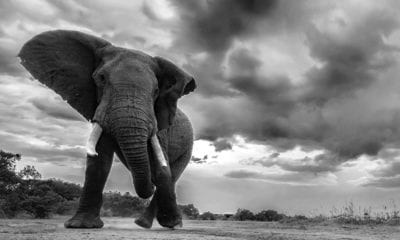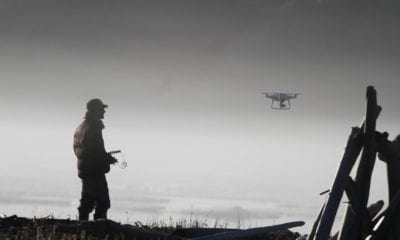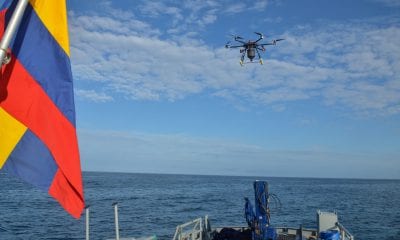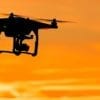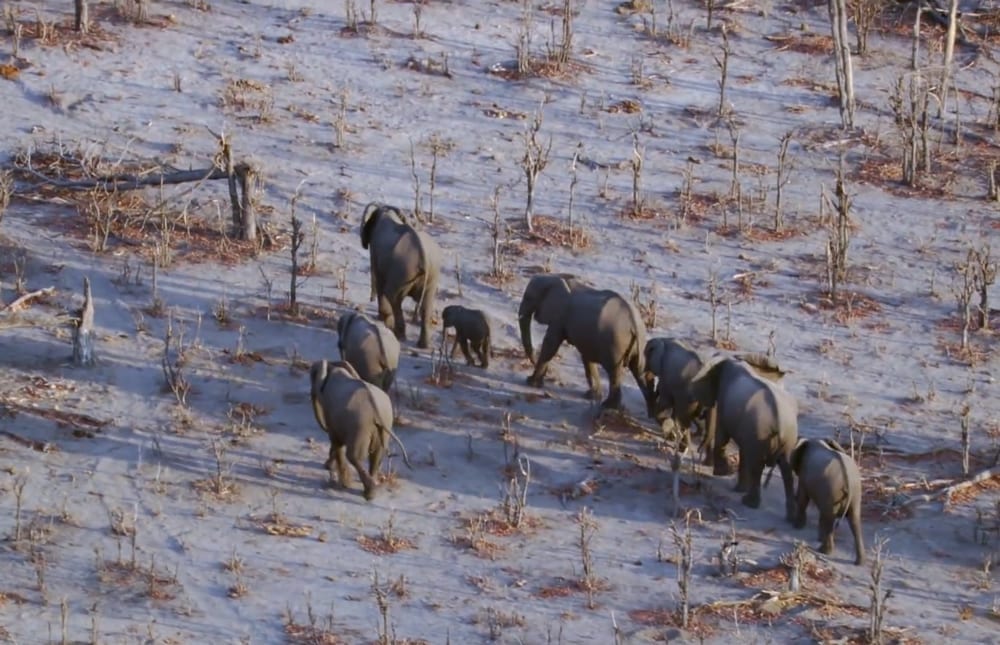
News
Drones Help SPOT Poachers in Action
With the passage of time, many species of animals, birds and fish have become extinct. While there are environmental and natural factors at play in many such cases, many endangered or rare species of animals are being hunted and killed by poachers.
In almost every country, poaching of different animals is prohibited and punishable by law; however, the implementation of this regulation by any regulatory authority is not feasible or at least not very sustainable in terms of long term effectiveness. Animals migrate from places to places and choose habitats with large landscapes that just cannot be monitored by law enforcers or scouts very efficiently throughout the year; making the regulatory lose its efficaciousness in practice
To solve this problem, there needs to be a regulatory system that can cover large areas without affecting animals themselves and protecting them from poacheing. A potential solution has been addressed by a collaborative effort of researchers from University of California, Carnegie Mellon University, Microsoft and AirShepherd as they developed SPOT – Systematic Poacher Detector, a novel application that augments conservation drones with the ability to automatically detect poachers and animals in near real time.
The research paper based on their work is titled, ‘SPOT Poachers in Action: Augmenting Conservation Drones with Automatic Detection in Near Real Time’.
What really is SPOT?
Well, we have already talked about the problem of monitoring poachers and how it is necessary. SPOT does just that, and then some. SPOT is basically smart thermal infra-red cameras mounted on a programmed Unmanned Aerial Vehicles (UAVs) or drones and integrated with Artificial Intelligence and Machine Learning, so as to detect poachers and animals below with a very high precision and accuracy and then report illegal poaching activity to back authorities in real-time.

Example UAV and thermal frames from UAV, with white boxes surrounding poachers.
But what makes SPOT so special about this development?
We know that monitoring of streaming footage is an arduous task requiring human supervision throughout the night, and is also prone to systematic lapses in quality as human detection often degrades with fatigue. Furthermore, as more drones are added to the system, more resources are required to monitor the additional videos.
However, the SPOT system has some useful strings to its bow;
- Monitoring poachers in real time, without recording and analyzing those recordings. So the crime is likely to be prevented rather than punished after it is committed.
- Analyzing the distances and terrains between poachers and the animals, trying to take necessary actions before an animal is shot.
- Reporting the location and profile of a poacher or hunter to the nearest park rangers in no time, ensuring that a poacher is caught and fined before they harm an animal.
- It also works all night long; when it is difficult for scouts or guards to patrol the area.
Ultimately, SPOT does the job of a scout or a guard far more efficiently and cheaper than hired personnel; making its usage practically necessary.
Let us touch on HOW the researchers were able to develop SPOT, made sure that it was feasible enough for practical usage and allowed room for development and AI to learn with meaningful data collection.
We already mentioned thermal infra-red cameras. The reason that they are used in SPOT is that while a normal, conventional camera could see the environment and distinguish different things from each using image processing, a conventional camera is virtually useless in the dark. No amount of processing can help you identify different objects before a camera in pitch black darkness. That is the reason SPOT is based on the fact that humans and animals are generally warmer than their environment, the trees, stones, water and land around them. So thermal imaging can very easily help identify mammals even in pitch black darkness. Thus, the usage of thermal IR cameras in the SPOT technology.
On top of thermal detection of poachers and animals, SPOT integrates motion algorithms in the system to account for the movements of both poachers and animals. They used two state-of-the-art algorithms, RCNN and YOLO for accurate processing of the data collected by the thermal camera; the two algorithms localize and classify videos as images for deep-learning based processing.
Deep learning? Yes, the UAVs used for SPOT are capable of programming themselves, learning the environment around them and getting better and better at their job. This is why SPOT involves “offline training” as networks are initiated to improve the working of UAVs equipped with SPOT.
Final Word
SPOT has been tested after development; off and on the field. Their defined criteria for feasibility being:
- Accurate detection
- Efficiency
With lab testing using different programs and on field results by real simulations, the system has fulfilled both its criteria.
Citation: SPOT Poachers in Action: Augmenting Conservation Drones With Automatic Detection in Near Real Time, Elizabeth Bondi, Fei Fang, Mark Hamilton, Debarun Kar, Donnabell Dmello, Jongmoo Choi, Robert Hannaford, Arvind Iyer, Lucas Joppa, Milind Tambe, Ram Nevatia | https://www.aaai.org/ocs/index.php/AAAI/AAAI18/paper/view/16282/16380
Also of Interest

